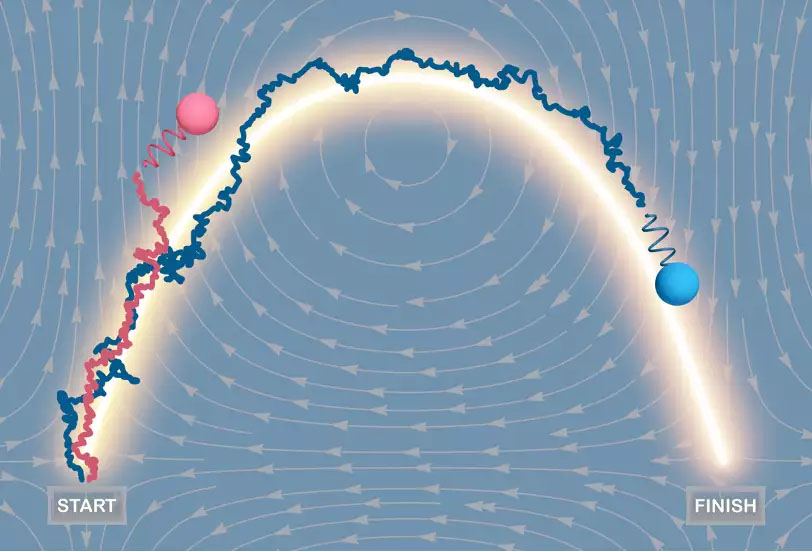| Oct 07, 2022 |
When making a detour is faster - novel navigation strategies for microscopic swimmers
(Nanowerk News) Whereas the shortest way between two points is a straight connection, it might not be the most efficient path to follow. Complex currents often affect the motion of microswimmers and make it difficult for them to reach their destination. At the same time, making use of these currents to navigate as fast as possible is a certain evolutionary advantage. Whereas such strategies allow biological microswimmers to better access food or escape a predator, microrobots could this way be directed to perform specific tasks.
|
|
The optimal path in a given current can readily be determined mathematically, yet fluctuations perturb the motion of microswimmers and deviate them from the optimal route. Thus, they have to readjust their motion in order to account for environmental changes. This typically requires the help of an external interpreter and takes away their autonomy.
|
|
“Thanks to evolution, some microorganisms have developed autonomous strategies that enable directed motion towards larger concentration of nutrients or light,” first author of the study (New Journal of Physics, "Optimal navigation of microswimmers in complex and noisy environments") Lorenzo Piro explains. Inspired by this idea, the researchers from the Department of Living Matter Physics at the MPI-DS designed strategies that allow microswimmers to navigate optimally in a nearly autonomous way.
|
 |
| Two microswimmers adapt their orientation to stay close to the illuminated path and reach the target faster. Making this detour can be highly beneficial since the straight way would lead them against the current (indicated by the grey arrows) (Image: MPI-DS)
|
Light as a guide for autonomous navigation
|
|
When an external interpreter defines the navigation pattern, microswimmers on average follow a well-defined path. Thus, it is a good approach to guide the microswimmer along that path within the current. This can be achieved autonomously via external stimuli, despite the presence of fluctuations.
|
|
This principle could be applied to swimmers that respond to variation of light, such as certain algae, in which case the optimal path can simply be illuminated. Remarkably, the resulting performances are comparable to externally supervised navigation.
|
|
“These new strategies can moreover conveniently be applied to more complex scenario such as navigation on curved surfaces or in presence of random currents,” concludes Ramin Golestanian, director at MPI-DS.
|
|
Possible applications of the study thus range from targeted drug delivery at the microscale to the optimal design of autonomous micromachines.
|

